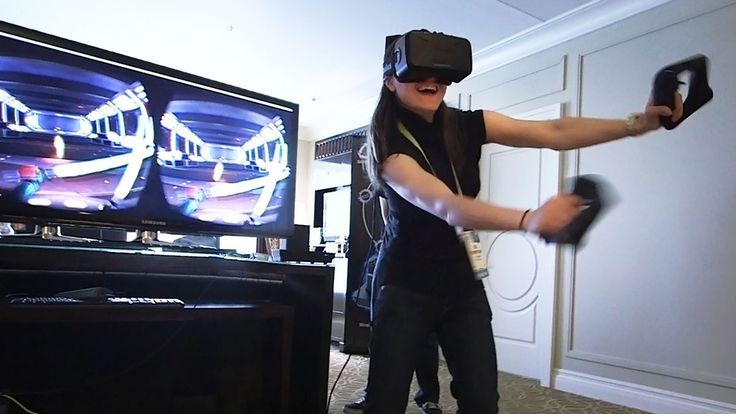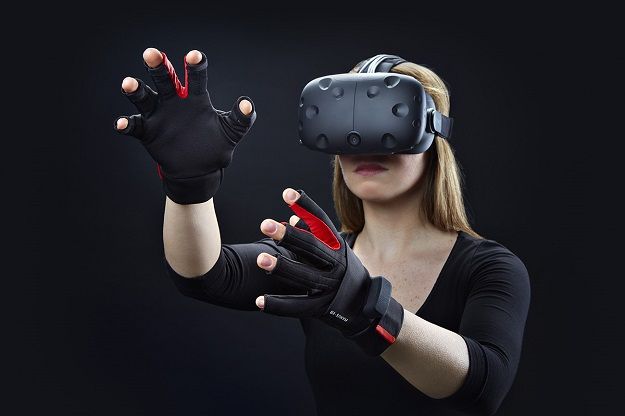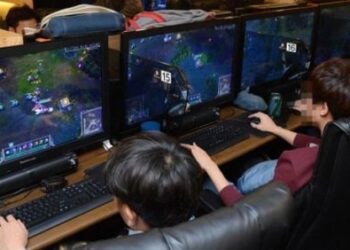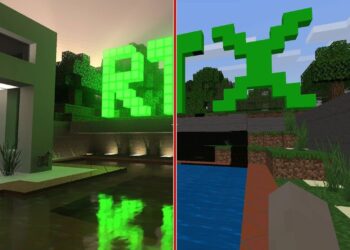For years, Virtual Reality (VR) has hovered on the edge of mainstream acceptance, a technology brimming with incredible promise yet tethered by noticeable limitations. We’ve been captivated by its potential, but often pulled back to the real world by clunky headsets, noticeable screen-door effects, and a subtle but persistent disconnect between our physical selves and our digital avatars. The dream of true immersion has been just that—a dream. But that is about to change. We are now standing at the precipice of a monumental leap, a transition from the VR we know to a next-generation experience that will fundamentally redefine the very concept of reality.
This is not a mere incremental update; it is a full-scale revolution. Driven by a convergence of breakthroughs in display technology, sensory feedback, and seamless interaction, the new wave of VR is dissolving the boundaries between the physical and the virtual. It promises an experience so convincing that our brains will no longer struggle to suspend disbelief. This next generation moves beyond entertainment, poised to become an integral platform for work, health, education, and social connection.
This comprehensive exploration will delve into the core technologies that are making this future possible. We will examine the revolutionary hardware that will trick our eyes and our sense of touch, explore the transformative applications that will reshape industries, and confront the critical challenges that lie on the path to building this new, immersive layer of human experience. Prepare to look beyond the hype and understand the tangible future of a reality redefined.
Beyond the Screen: The Core Technological Breakthroughs
The magic of next-generation VR lies in its ability to convince our senses. This requires a symphony of advanced technologies working in perfect harmony to deliver an experience that feels not just seen, but truly felt. The key innovations are not just about more pixels; they are about creating a holistic, intuitive, and believable digital existence.
A. The Visual Revolution: Seeing is Believing The most immediate barrier to immersion has always been the display. Next-gen VR is shattering this barrier with a suite of new technologies that mimic the human eye with astonishing fidelity.
- Micro-OLED Displays: Moving beyond traditional LCD and OLED panels, Micro-OLEDs represent a quantum leap in pixel density. This technology effectively eliminates the “screen-door effect” (the visible grid of pixels), resulting in a smooth, crystal-clear image that feels more like looking through a window than at a screen. Combined with High Dynamic Range (HDR), these displays produce incredibly vibrant colors and deep, true blacks, making virtual worlds pop with lifelike brilliance.
- Varifocal and Pancake Lenses: A major cause of eye strain and nausea in older headsets is the “vergence-accommodation conflict,” where your eyes focus at a fixed distance (the screen) but converge at a different distance (the virtual object). New varifocal lenses solve this by dynamically changing their focal point to match where you are looking in the virtual space, allowing your eyes to behave naturally. This is complemented by “pancake lenses,” an advanced optical design that folds light within the lens, allowing for dramatically thinner and lighter headsets without sacrificing field of view.
B. The Sense of Touch: Feeling the Virtual World True immersion requires more than just sight and sound. Haptic technology is evolving from simple controller rumbles into sophisticated systems that simulate touch, texture, and impact across the entire body.
- Advanced Haptic Suits and Vests: Companies are developing full-body suits with dozens, or even hundreds, of individual haptic actuators. These can simulate a wide range of sensations, from the gentle patter of rain on your shoulders to the impactful force of a virtual explosion. This technology is a game-changer for training simulations and deeply immersive entertainment.
- Haptic Gloves and Fingertip Feedback: The next frontier is replicating the intricate sense of touch in our hands. Advanced gloves now incorporate pneumatic actuators, microfluidics, and force-feedback systems that can simulate the shape, texture, and resistance of a virtual object. You won’t just see the virtual coffee cup; you’ll feel its smooth ceramic surface and the subtle resistance as you pick it up.
- Ultrasonic Haptics: Pushing the boundaries even further, ultrasonic haptics use arrays of speakers to project focused ultrasound waves into the air, creating pressure points that you can feel on your bare skin. This allows for the eerie and incredible sensation of touching and interacting with floating menus, buttons, and energy fields without wearing any gloves at all.
C. Seamless Interaction: The Disappearing Controller The ultimate goal of VR is to make the technology disappear, allowing you to interact with the world as you do in reality. This is being achieved through intuitive tracking and brain-computer interfaces.
- Eye-Tracking and Foveated Rendering: Integrated eye-tracking cameras are now a staple of high-end headsets. They know precisely where you are looking at any given moment. This unlocks foveated rendering, a revolutionary efficiency technique where the system renders only the exact spot you are looking at in full, ultra-high resolution, while the periphery is rendered at a lower quality. Your brain doesn’t notice the difference, but it dramatically reduces the computational power needed, allowing for more complex graphics on lighter, untethered devices.
- Inside-Out Full-Body Tracking: The need for external sensors and base stations is vanishing. Advanced inside-out tracking uses the headset’s own cameras, powered by sophisticated AI, to accurately track the position of your head, torso, arms, and even your legs. This allows for natural, full-body movement and avatar kinematics without a complex setup.
- Brain-Computer Interfaces (BCIs): While still in its early stages, BCI technology represents the ultimate end-game for VR interaction. Companies are developing non-invasive headbands that can read and interpret neural signals. Initially, this will allow for simple commands—thinking “select” to click a button or “home” to return to a menu. In the long term, BCIs could enable a level of control and immersion that is currently the stuff of science fiction.
D. Cutting the Cord: The Power of Wireless Fidelity The freedom of untethered VR is paramount. Next-generation connectivity standards are finally making it possible to stream photorealistic, complex virtual worlds from the cloud to a lightweight headset without any perceptible lag.
- Wi-Fi 7 and 5G/6G: These new wireless standards provide the massive bandwidth and ultra-low latency required for high-fidelity cloud streaming. This shifts the heavy processing load from a bulky local PC or an onboard chip to powerful cloud servers, enabling headsets to become as sleek and portable as a pair of sunglasses while delivering graphics that rival the most powerful gaming rigs.
The World Reimagined: Applications Beyond Gaming

While gaming will always be a major driver of VR, the next generation’s true impact will be felt across every major industry, transforming how we work, learn, heal, and connect.
A. The Enterprise Metaverse: The New Workplace The concept of remote work is about to become far more engaging and collaborative. The enterprise metaverse will use next-gen VR to create persistent virtual office spaces and worksites.
- True Presence in Meetings: Move beyond flat video calls to meetings with photorealistic, full-body avatars that replicate your real-world body language and facial expressions. This creates a genuine sense of “co-presence,” improving communication and reducing “Zoom fatigue.”
- Collaborative 3D Design: Engineers, architects, and designers can meet inside a virtual representation of their product or building. They can walk through a full-scale jet engine, make real-time modifications to a skyscraper’s design, or collaborate on complex 3D models in a way that is impossible on a 2D screen.
B. Healthcare and Medicine Transformed VR is becoming a powerful tool for both training medical professionals and treating patients.
- Hyper-Realistic Surgical Training: Medical students and surgeons can practice complex procedures on anatomically accurate, haptically-enabled virtual patients. They can feel the resistance of virtual tissue and receive real-time feedback on their performance in a zero-risk environment.
- VR Exposure Therapy: For patients suffering from PTSD, anxiety disorders, and phobias, VR provides a safe and controlled environment to confront their fears. This form of therapy has shown remarkable success in treating veterans and first responders.
C. Education and Training Without Borders VR will democratize education by providing access to experiences that were previously impossible or prohibitively expensive.
- Immersive Learning: History students can walk the streets of ancient Rome, biology students can shrink down to explore the human circulatory system, and art students can stand next to the sculptor as they craft a masterpiece.
- Hands-On Skills Training: VR offers a safe and repeatable environment to train for high-stakes professions. Aspiring pilots can practice emergency landings, technicians can learn to repair complex machinery, and public speakers can rehearse in front of a virtual audience.
D. The Evolution of Social Connection Social VR platforms will evolve from cartoonish worlds into stunningly realistic virtual spaces, enabled by photorealistic avatars and digital twins. Attending a live concert with friends from across the globe will feel no different from being there in person—you’ll be able to see their genuine expressions, hear the roar of the crowd, and share a truly collective experience.
Building This New Reality: Challenges on the Road Ahead

The path to this immersive future is not without significant hurdles. Addressing these challenges is crucial for building a VR ecosystem that is open, safe, and accessible to all.
A. The Interoperability Problem: A major question is whether the metaverse will be an open, interconnected space like the internet, or a series of “walled gardens” controlled by different tech giants. True interoperability is needed to allow users to take their avatars and digital assets from one platform to another seamlessly.
B. Ethical and Societal Questions: The power of next-gen VR brings with it profound ethical responsibilities. With eye-tracking, companies could gather unprecedented data on what captures our attention. The line between digital identity and real-world identity will blur, raising questions about privacy, security, and the potential for addiction or escapism.
C. The Accessibility Barrier: Cutting-edge technology is invariably expensive. Ensuring that next-generation VR does not become a tool that widens the digital divide will be a critical challenge. Furthermore, designing these virtual worlds to be inclusive and accessible for people with disabilities must be a priority from the outset.
The Inevitable Immersive Future
Next-generation Virtual Reality is no longer a distant vision; it is an active and accelerating technological movement. Fueled by seismic breakthroughs in displays that fool our eyes, haptics that convince our bodies, and interactions that read our intentions, VR is rapidly maturing from a niche entertainment gadget into a foundational computing platform. Its impact will be broad and deep, reshaping the nature of work, accelerating learning, revolutionizing healthcare, and forging new paradigms for human connection.
While formidable challenges of interoperability, ethics, and accessibility must be thoughtfully addressed, the trajectory is clear. We are moving towards an inevitable future where a seamless, immersive, and convincing digital layer will intertwine with our physical reality. This next wave of VR will do more than just redefine reality—it will expand the very definition of human experience.











